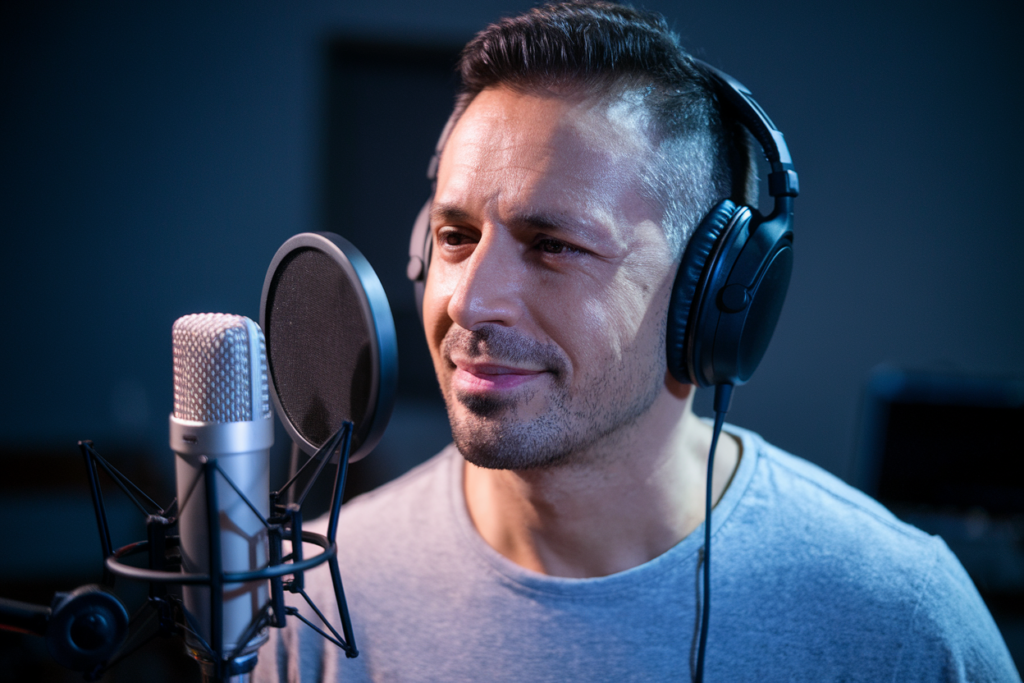Key Takeaways
- Shared Linguistic Roots: Azerbaijani and Turkish belong to the Oghuz branch of the Turkic language family, promoting mutual understanding due to their common ancestry.
- Vocabulary Similarities: Many basic words in both languages are identical or very similar, facilitating easier communication for speakers of either language.
- Grammatical Parallels: Both languages exhibit similar grammatical structures, including noun cases and verb conjugation patterns, which enhance comprehension for learners.
- Phonetic Compatibility: Pronunciation patterns and vowel sounds in Azerbaijani and Turkish align closely, aiding speakers from one language in understanding the other.
- Cultural Influences: Historical interactions with Persian, Arabic, Russian, and Western cultures have enriched both languages’ vocabularies, reflecting diverse cultural identities.
Ever wondered how similar Azerbaijani is to Turkish? If you’re curious about language connections or planning a trip to either country, understanding this relationship can be incredibly valuable. Both languages share roots in the Turkic family, but just how closely are they linked?
Overview of Azerbaijani and Turkish Languages
Azerbaijani and Turkish belong to the Oghuz branch of the Turkic language family. Both languages share a significant amount of vocabulary, grammar structures, and phonetic characteristics. Their common ancestry facilitates mutual understanding among speakers, especially in everyday conversations.
Azerbaijani has two primary dialects: North Azerbaijani and South Azerbaijani. North Azerbaijani is predominantly spoken in Azerbaijan, while South Azerbaijani is found mainly in Iran. Turkish, primarily spoken in Turkey, exhibits regional dialects as well but maintains a standard form that unites its speakers.
The grammatical frameworks are similar between both languages. Noun cases exist in both Azerbaijani and Turkish, allowing for clear expression of relationships between words within sentences. Additionally, vowel harmony plays a crucial role; vowels must match within syllables for fluid pronunciation.
Vocabulary overlaps significantly; many basic words are identical or very similar across both languages. For instance:
| English | Azerbaijani | Turkish |
|---|---|---|
| Water | Su | Su |
| House | Ev | Ev |
| Mother | Ana | Anne |
| Friend | Dost | Arkadaş |
While differences do exist due to historical influences—such as Persian on Azerbaijani and French on Turkish—the core similarities remain prominent. Understanding these connections can enhance communication for anyone exploring either culture or language further.
Linguistic Classification
Azerbaijani and Turkish share a close relationship within the Turkic language family. Understanding their linguistic classification reveals deeper insights into their similarities.
Turkic Language Family
Both Azerbaijani and Turkish belong to the Oghuz branch of the Turkic language family. This classification highlights their shared historical roots, promoting mutual intelligibility among speakers. The Turkic languages are characterized by agglutination, allowing for complex ideas to be expressed through prefixing and suffixing. As a result, many fundamental vocabulary words reflect similar sounds and meanings across both languages, enhancing communication for speakers of either.
Dialectal Variations
Azerbaijani features two main dialects: North Azerbaijani, prevalent in Azerbaijan, and South Azerbaijani, primarily spoken in Iran. In contrast, Turkish also exhibits regional dialects but generally adheres to a standardized form used in media and education. These dialectal differences can affect pronunciation and some vocabulary choices; however, they don’t significantly hinder comprehension between native speakers of Azerbaijani and Turkish. The grammatical structures remain consistent across these variations, further facilitating clear communication between them.
Phonetic Similarities
Azerbaijani and Turkish exhibit notable phonetic similarities, making them relatively easy for speakers of one language to understand the other.
Pronunciation Patterns
Both languages share similar pronunciation patterns, particularly in vowel sounds. For instance, the vowels a, e, i, o, and u appear in both languages with comparable pronunciations. Additionally, consonants such as b, d, g, k, and m are pronounced similarly across Azerbaijani and Turkish. This similarity aids in mutual comprehension.
Stress and Intonation
Stress patterns also align closely between Azerbaijani and Turkish. Generally, stress falls on the last syllable of words in both languages. Intonation tends to follow a similar melodic contour during speech. These shared characteristics enhance overall communication effectiveness among speakers of either language.
Grammatical Parallels
Azerbaijani and Turkish exhibit significant grammatical parallels, reflecting their shared Turkic roots. Understanding these similarities enhances communication for speakers of both languages.
Sentence Structure
Both Azerbaijani and Turkish follow a Subject-Object-Verb (SOV) sentence structure. For example, ”I eat an apple” translates to ”Mən alma yiyirəm” in Azerbaijani and ”Ben elma yiyorum” in Turkish. This consistency aids comprehension for learners transitioning between the two languages. Additionally, sentences often feature modifiers before nouns, maintaining a similar word order across both languages.
Verb Conjugation
Verb conjugation remains another area of similarity between Azerbaijani and Turkish. Both languages utilize suffixes to denote tense, aspect, mood, and subject agreement. For instance, the present tense suffix ”-ir” appears in both languages when conjugating verbs like ”to go.” This parallelism simplifies the learning process for those familiar with either language’s verb forms while reinforcing mutual intelligibility among native speakers.
Vocabulary Comparisons
Azerbaijani and Turkish share a rich tapestry of vocabulary due to their common Turkic roots. This shared lexicon significantly enhances mutual understanding between speakers.
Common Words and Phrases
Many everyday words in Azerbaijani and Turkish are identical or strikingly similar, which makes communication smoother. For instance, the word for ”book” is ”kitab” in both languages, while ”water” translates to ”su.” Basic greetings also resonate closely—“hello” matches as “salam” in Azerbaijani and “merhaba” in Turkish. Such similarities create an accessible bridge for speakers of both languages, facilitating easier interaction during travel or cultural exchanges.
Loanwords and Borrowings
Both Azerbaijani and Turkish incorporate loanwords from Persian, Arabic, French, and Russian due to historical influences. These borrowed terms often retain similar meanings. For example, the Arabic-derived word for ”teacher,” “müəllim” in Azerbaijani equates to “öğretmen” in Turkish but highlights how different linguistic layers enrich the vocabulary of each language. Understanding these borrowings can deepen your appreciation of each language’s evolution while illustrating how cultures influence one another over time.
These vocabulary comparisons reveal not just similarities but also the nuances that make learning either language an engaging experience.
Cultural Influences on Language
Azerbaijani and Turkish reflect diverse cultural influences that shape their languages. Both cultures embrace a rich history of interactions with neighboring civilizations, contributing to linguistic evolution.
Persian Influence
Persian culture significantly impacted Azerbaijani vocabulary, especially in literature and art. You’ll find many Persian loanwords in everyday conversations, enhancing the depth of expression. For instance, words related to poetry and philosophy often stem from this influence.
Arabic Contributions
Arabic has also left its mark on both languages, particularly in religious contexts. Terms associated with Islam are common in Azerbaijani and Turkish. Understanding these terms enriches your grasp of cultural nuances when communicating with native speakers.
Russian Presence
With historical ties to Russia, Azerbaijani absorbed numerous Russian words during the 19th and 20th centuries. These borrowings often relate to technology, governance, and modern life. Recognizing these terms aids comprehension when navigating contemporary topics in conversation.
Western Impacts
In recent years, globalization introduced Western terminology into both languages. English phrases frequently appear in business settings or pop culture discussions. Familiarity with these borrowed expressions keeps you connected to current trends shaping language use today.
Cultural interconnections through language offer insights into shared experiences between Azerbaijanis and Turks. Engaging with these influences not only enhances communication but deepens appreciation for each culture’s unique identity as well.
Conclusion
Exploring the similarities between Azerbaijani and Turkish reveals a fascinating connection rooted in their shared Turkic heritage. This understanding opens up opportunities for deeper communication whether you’re visiting Azerbaijan or Turkey.
With significant overlaps in vocabulary grammar and phonetics you’ll find that mastering one language can greatly ease your journey into the other. The mutual intelligibility makes it easier to connect with speakers of either language enhancing both personal and cultural experiences.
As you delve into these languages consider how their historical influences have shaped them enriching your appreciation for the diverse cultures they represent. Embracing this linguistic relationship not only aids communication but also fosters a greater understanding of each country’s unique identity.
Frequently Asked Questions
What are the main similarities between Azerbaijani and Turkish?
Both Azerbaijani and Turkish share roots in the Turkic language family, belonging to the Oghuz branch. They have significant vocabulary overlaps, similar grammatical structures, and phonetic characteristics that facilitate mutual understanding among speakers.
How many dialects does Azerbaijani have?
Azerbaijani has two primary dialects: North Azerbaijani, spoken in Azerbaijan, and South Azerbaijani, primarily found in Iran. Both dialects maintain core similarities despite some regional variations.
What is the sentence structure of Azerbaijani and Turkish?
Both languages follow a Subject-Object-Verb (SOV) sentence structure. For example, ”I eat an apple” translates to ”Mən alma yiyirəm” in Azerbaijani and ”Ben elma yiyorum” in Turkish.
Are there phonetic similarities between these languages?
Yes, both Azerbaijani and Turkish exhibit comparable pronunciation patterns. Stress typically falls on the last syllable of words in both languages, enhancing mutual comprehension among speakers.
How do cultural influences affect their vocabularies?
Cultural interactions have significantly shaped both languages’ vocabularies. Persian influences are notable in Azerbaijani literature while Arabic contributions appear mainly in religious contexts. Additionally, globalization has introduced English terms into both languages.
Why is it important to understand these language connections?
Understanding the relationship between Azerbaijani and Turkish enhances communication for travelers or language learners interested in exploring either culture. It also deepens appreciation for each language’s unique identity shaped by historical influences.







